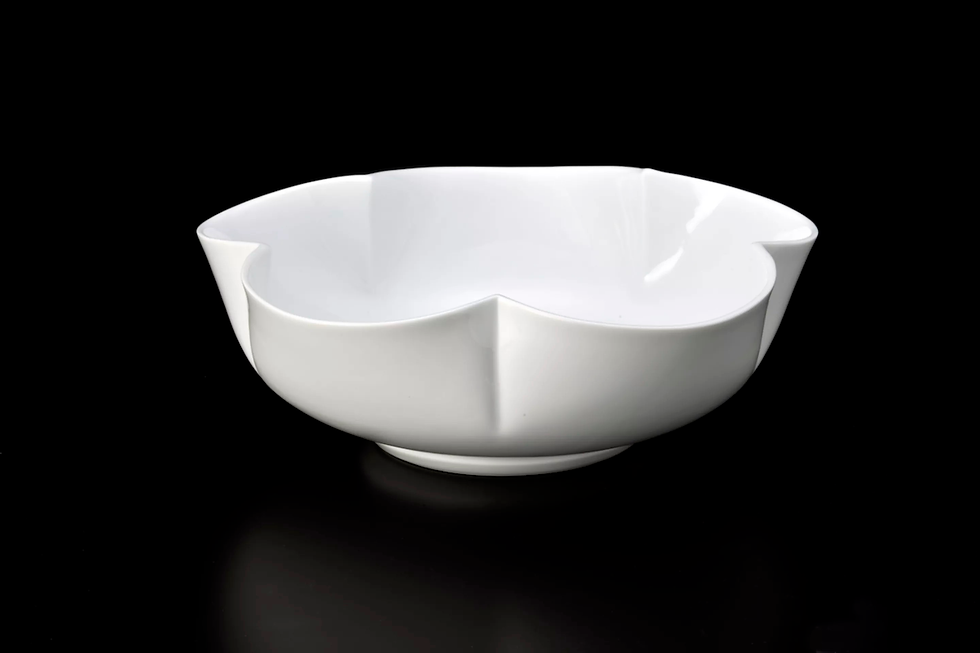5 Japanese Ceramicists Who Are National Living Treasures
- Ellen Michel
- Oct 23, 2023
- 4 min read
Updated: Dec 6, 2023
For most, the word “treasure” conjures images of shiny pirate booty or age-old cultural artifacts, propped on museum pedestals. But in Japan, the term evokes different associations. Since 1950, when the Japanese government established the Cultural Properties Protection Law, the moniker “Living National Treasure” has been used to describe a small group of living, breathing artists whose unparalleled skills have earned their country’s protection.
It’s an unusual approach to cultural preservation. (South Korea, the Philippines, France, and Romania are among those that have similar designations.) But in the messy aftermath of World War II, when Japan strove not only to rebuild its infrastructure, but also to safeguard its cultural legacy, the program was established as an effective tool. Over 100 artisans have earned the title to date, and today, upwards of 50 living artists—masters in ceramics, lacquer, metalwork, woodwork, papermaking, kimono arts, and more—are deemed “Living National Treasures,” or more ceremoniously, “Bearers of Important Intangible Cultural Assets.” With it comes both an annual stipend and the duty to share the secrets of their craft with others, both younger artists and the general public alike, in Japan and beyond.
But while these artists are celebrated in their home country, their work remains rather obscure abroad. Below, we highlight five Living National Treasures who are at once honoring and reinventing time-honored ceramic techniques—pushing their medium forward while preserving their country’s cultural heritage in the process.
Sado Island Jar, 2012
Onishi Gallery
Sekisui V hails from a Japanese ceramics dynasty that has forged mumyōi, or red clay vessels, for 14 generations. Laden with ferric oxide, the clay is collected from the gold mines of Sado Island, where the artist was born and continues to operate his family’s eponymous kiln. There, Sekisui V brings his family’s legacy into the 21st century by experimenting with idiosyncratic firing and glazing techniques. The resulting works assume a variety of forms, from elegant, blossom-swathed bowls to flaky, bumpy red-and-black vases, his most famous works, which resemble relics pulled from the ashes of a volcanic eruption.
Manji Inoue

Manji Inoue, White porcelain flower shaped flower vase, 2012. Image courtesy of Ippodo Gallery.
Inoue was born and raised in Arita City, an area known for its storied production of ceramics, dating back to the 17th century. After a stint in the Japanese Navy, the budding artist devoted himself fully to carrying on the tradition of arita ware. Drawing from the teachings of Sakaida Kakiemon XIV, an arita master and fellow Living National Treasure with whom Inoue apprenticed, he developed an elegant, almost minimalist style characterized by sinuous curves. His vases often go unadorned, swathed only in his signature translucent light green glaze, which gives off an otherworldly glow.


Working in the medieval anagama tradition, Jun fires his hand-hewn sculptures, tea vessels, platters, and vases in a kiln dug into a hillside in Bizen, an area known for its traditional, unglazed stoneware. Like other Bizen pottery, Jun’s work is decorated not with glazes, but with natural materials—red pine ash and straw, for instance—placed in the kiln during firing. Jun revels in the element of chance that’s at the heart of this process. The resulting vessels resemble ancient artifacts complete with uneven edges, unexpected bursts of color and line, and asymmetrical, debossed patterns.
Nakajima Hiroshi

Nakajima Hiroshi, Ten seiji (sky blue)-celadon jar with carved lines, 2014. Image courtesy of the artist and Onishi Gallery.
Hiroshi established his own kiln at the age of 28. Since then, the intrepid artist has developed a signature style, dubbed “Nakajima Celadon,” recognized for its graceful forms and inventive glazes. Celadon refers to the color—a monochromatic jade-green glaze—of all of Hiroshi’s work. He describes it as a “climate color,” representative of mountains, rivers, and air. With a staggering loss rate of nearly 80 percent, celadon pottery is said to be one of the most difficult techniques to master. Hiroshi is only one of a handful of Japanese artists carrying the tradition’s torch today.


Imaemon XIV comes from a long line of ceramicists—the family can trace their relationship with the medium back to the beginning of the Edo Period, in the 17th century, when they were named the “official overglaze enamel artisan” of the famed Nabeshima kiln. Imaemon XIV continues to work in the Nabeshima tradition, known for elegant white vessels decorated with vibrant, labyrinthine patterns that evoke the natural world. Drawing from these traditions, along with his early apprenticeship with Osamu Suzuki (another Living National Treasure), and the contemporary world around him, Imaemon XIV’s vases and plates resolve as intricate—at times ecstatic—updates to the Nabeshima technique. The artist was named a Living National Treasure in 2014 at the age of 51; at the time, he was the youngest ever honored with the title.
AG
Alexxa Gotthardt








Comments